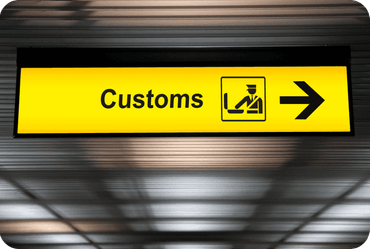
Cost-Effective International Shipping Methods for Buyers
What Are the Most Cost-Effective International Shipping Methods for Individual Buyers?
Global e-commerce has made it easier than ever for individuals to purchase products from international retailers. However, shipping costs can be a major concern, often making cross-border shopping less attractive. Understanding the most cost-effective shipping methods can help individual buyers reduce expenses while ensuring their packages arrive safely and on time.
1. Understanding Cost-Effective International Shipping Options
International shipping methods vary in price, speed, and reliability. Some of the most budget-friendly options include:
a. Postal Services (National Mail Carriers)
Most countries have national postal services offering international shipping at lower rates compared to private couriers. Services like USPS, Royal Mail, Canada Post, and Deutsche Post provide affordable options, especially for lightweight packages.
- Pros: Lower shipping rates, widely available.
- Cons: Longer delivery times, limited tracking, and potential customs delays.
b. Economy Shipping via Private Couriers
Many international couriers offer economy shipping options, which are slower but more affordable than express services. Companies like DHL eCommerce, FedEx Economy, and UPS Standard provide international delivery at reduced rates.
- Pros: Reliable tracking, moderate delivery speeds.
- Cons: Higher cost than postal services, potential customs duties.
c. Package Forwarding and Consolidation Services
Package forwarding services allow buyers to shop from multiple retailers in a country, consolidate their purchases, and ship them together, reducing overall shipping costs.
- Pros: Cost savings through consolidation, access to retailers that do not ship internationally.
- Cons: Additional storage or handling fees, varying international regulations.
d. Sea Freight for Large Orders
While not common for small packages, sea freight can be a cost-effective option for bulk purchases or large, heavy items. Some services offer Less than Container Load (LCL) shipping, which allows individuals to share container space.
- Pros: Lower shipping costs for heavy items.
- Cons: Long transit times, customs clearance requirements.
2. Factors That Influence International Shipping Costs
Several factors determine the total cost of shipping an item internationally:
a. Package Size and Weight
Most carriers charge based on actual weight or volumetric weight (size-based pricing). Reducing excess packaging can lower costs.
b. Shipping Distance and Destination
Shipping costs increase with distance. Certain countries also have higher import duties and taxes, impacting the final price.
c. Carrier and Service Type
Express shipping is the fastest but also the most expensive. Opting for economy or standard services significantly reduces costs.
d. Customs Fees and Import Duties
Customs charges depend on the destination country’s regulations. Understanding these fees in advance can help avoid unexpected costs.
3. How to Reduce International Shipping Costs
a. Choose Economy or Consolidated Shipping
If delivery time is not urgent, selecting economy shipping or consolidating multiple items into a single package can lower expenses.
b. Shop from Retailers Offering Free or Discounted Shipping
Some international stores provide free or discounted shipping on bulk purchases. Checking a retailer’s shipping policies before purchasing can help save costs.
c. Use a Package Forwarding Service
For buyers who frequently shop internationally, using a package forwarding service allows consolidation, reducing shipping costs per item.
d. Compare Shipping Rates
Using comparison tools like Parcel Monkey or Easyship helps buyers find the most affordable shipping options based on package size and destination.
e. Be Aware of Customs Regulations
Understanding duty-free thresholds and customs fees in your country can prevent unexpected charges. Some countries allow duty exemptions for low-value shipments.
Conclusion
For individual buyers, finding the most cost-effective international shipping method depends on factors like package size, urgency, and destination. Economy shipping, package forwarding, and consolidation services offer practical ways to reduce costs. By comparing rates and choosing the right shipping strategy, international buyers can make cross-border shopping more affordable.
- 1. Understanding Cost-Effective International Shipping Optionsa. Postal Services (National Mail Carriers)b. Economy Shipping via Private Couriersc. Package Forwarding and Consolidation Servicesd. Sea Freight for Large Orders
- 2. Factors That Influence International Shipping Costsa. Package Size and Weightb. Shipping Distance and Destinationc. Carrier and Service Typed. Customs Fees and Import Duties
- 3. How to Reduce International Shipping Costsa. Choose Economy or Consolidated Shippingb. Shop from Retailers Offering Free or Discounted Shippingc. Use a Package Forwarding Serviced. Compare Shipping Ratese. Be Aware of Customs Regulations
- 4. Conclusion
Related Articles

Best Parcel Forwarding Strategies for Personal Shoppers

How to Navigate Customs Fees and Duties as a Personal Shopper
